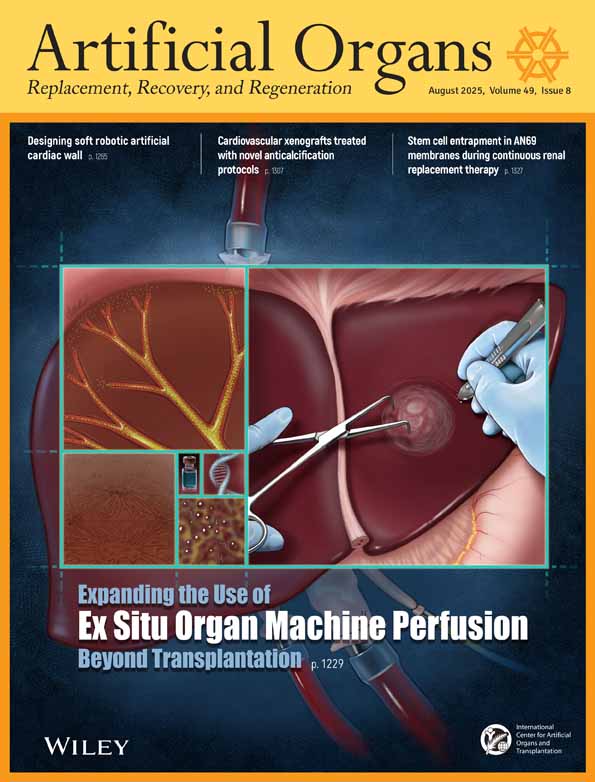Modeling Flow Effects on Thrombotic Deposition in a Membrane Oxygenator
Abstract
Abstract: The hypothesis that regions of low blood velocity in a membrane oxygenator, as predicted by computational fluid dynamics (CFD), would correspond with regions of clinical thrombotic deposition was investigated. Twenty heparin-coated oxygenators were sectioned following use in adult extracorporeal membrane oxygenation. The activated clotting time (ACT) was maintained at approximately 180 s via heparin infusion throughout the support period. Cross-sections were systematically photographed, and slides made to allow image projection upon a digitizing pad. Thrombotic deposition was traced to allow creation of a device cross-section image with an overlaid color scale representing thrombotic deposition frequency. A two-dimensional CFD model was developed to predict blood velocities throughout the oxygenator cross-section. Direct spatial comparisons were made between maps of CFD modeled blood speed and thrombotic deposition. Theoretical oxygenator design modification was performed within the CFD model to investigate flow paths which might minimize regions of low blood velocity. CFD results demonstrated that low velocity regions qualitatively matched regions with a high incidence of thrombotic deposition. Thrombotic deposition was also correlated to longer perfusion periods. This technique of coupling clinical data and CFD offers the potential to relate flow characteristics to thrombotic deposition and represents a potentially powerful new methodology for the optimization of oxygenator flow-related biocompatibility.




